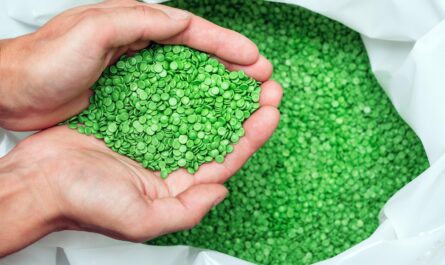Market Overview:
Petrochemicals are chemical products derived from petroleum and natural gas. They serve as basic building blocks for a wide range of derivative chemicals that are used to manufacture products such as plastic, rubber, fibre, and automotive parts. Key petrochemicals produced include ethylene, propylene, benzene, xylene, and toluene. They find widespread applications across industries such as packaging, construction, automotive, healthcare, and consumer goods. Rapid urbanization and rising disposable incomes are driving demand for packaged foods and consumer durables, boosting the petrochemicals market.
Market Dynamics:
The global petrochemicals market is expected to exhibit significant growth over the forecast period, driven by increasing construction activities and the growing packaging industry worldwide.
This growth in construction will drive demand for petrochemical-derived materials like paints, rubber, and plastics used in pipes, wires, flooring, insulation, and other building components. Furthermore, increasing consumption of packaged foods and goods owing to changing lifestyles is propelling the packaging industry. Petrochemicals serve as raw materials for manufacturing various packaging mediums like flexible plastic films, bottles, containers, etc. The Global Packaging Alliance estimates that global packaging demand will grow by 4% annually until 2025. Growth in
Segment Analysis
The global petrochemicals market is dominated by the ethylene and propylene sub-segment, which accounted for over 40% of the total market share in 2023. Ethylene and propylene are basic petrochemical building blocks that are used to produce numerous derivative products including plastic resins, synthetic rubbers, fibers, films, and other industrial chemicals. The widespread applications of products derived from ethylene and propylene across several end-use industries such as packaging, automotive, construction, and healthcare have been driving the demand for these chemical building blocks.
PEST Analysis
Political: The petrochemical industry is greatly influenced by energy and environmental regulations set by governments across countries. Stricter regulations to curb pollution and promote sustainability can impact operations and costs for petrochemical companies.
Economic: The petrochemical industry is highly cyclical and dependent on economic growth dynamics. A slowing global economy results in weak demand for petrochemical products from downstream sectors. However, emerging economies continue to drive overall petrochemical demand growth.
Social: Rising living standards and income levels in developing nations have increased the demand for petroleum-based consumer products such as plastics, packaging, and synthetic fibers. However, the industry also faces social challenges related to pollution and plastic waste management.
Technological: Advancements in plastic recycling technologies are helping reduce environmental footprint. However, the industry requires continuous investments in R&D to develop more sustainable chemical processes and renewable feedstocks.
Key Takeaways:
The Asia Pacific region dominated the global market, accounting for over 35% of the total demand in 2023. China represents the largest consumer as well as producer of petrochemicals globally, driven by the country’s vast manufacturing industry and growing construction activity.
Key players in the petrochemicals market landscape include BASF SE, Sinopec Limited, ExxonMobil, The Dow Chemical Company, Shell Chemical Company, SABIC, LyondellBasell Industries, Total S.A., Sumitomo Chemical Co. Ltd., Chevron Phillips Chemical Company LLC and E. I. du Pont de Nemours and SNPC, INEOS, and Reliance Industries. Asia Pacific is projected to remain the fastest-growing regional market over the next decade, supported by capacity additions across China, India, South Korea and other ASEAN countries to cater to the rising domestic demand for petrochemical products.
The key growth drivers comprise rapid industrialization and infrastructural development activities especially in developing Asian economies along with an increasing per capita plastic consumption worldwide. However, stringent environmental regulations regarding plastic waste disposal and recycling are encouraging petrochemical manufacturers to invest in sustainable chemical processes and eco-friendly product offerings.
*Note:
- Source: Coherent Market Insights, Public sources, Desk research
- We have leveraged AI tools to mine information and compile it




